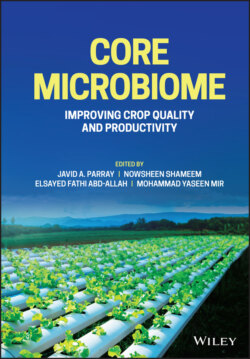Читать книгу Core Microbiome - Группа авторов - Страница 63
4.2.4 Bioremediation of Organic Contaminants, Heavy Metals, and Pesticides in Soils
ОглавлениеSoils are contaminated with harmful chemicals. Potential bioapproaches are biostimulation, i.e., fertilizers and bioaugmentation by adding organic amendments with active microorganisms in it, or the compost. Recently, compost has been used for soil bioremediation. Compost addition can comprise “super bioaugmentation” with a mixture of degrading microbes, combined with “biostimulation” (Kastner and Miltner 2016).
Compost is used in bioremediation to break down toxic pollutants and other harmful substances, minimizing the toxicity of metallic contaminants in organic residues, wastes, and by-products. After the composting process stabilizes the waste, it can be disposed to landfills or farmland (Ankidawa and Nwodo 2011). The stabilized organic matter can also form complexes and restrict metal flow and enhance absorption in plants.
The microbial activity during composting helps in the decomposition of pesticides in the soil. A report suggests that the pesticide content is present in composts following the breakdown of pesticides during composting (Wu and Ma 2000). The addition of compost is known to enhance the degradation of two herbicides viz., benthiocarb S-4-chlorobenzyl diethylthiocarbamate (benthiocarb) and 4-chloro-2-methylphenoxyacetic acid (MCPA) in soils. The soil amended with compost improved the breakdown of a fumigant (1, 3-dichloropropene) in comparison with the soil without compost. The concentration of pesticides was at safe levels for plants in soils due to the application of compost.
